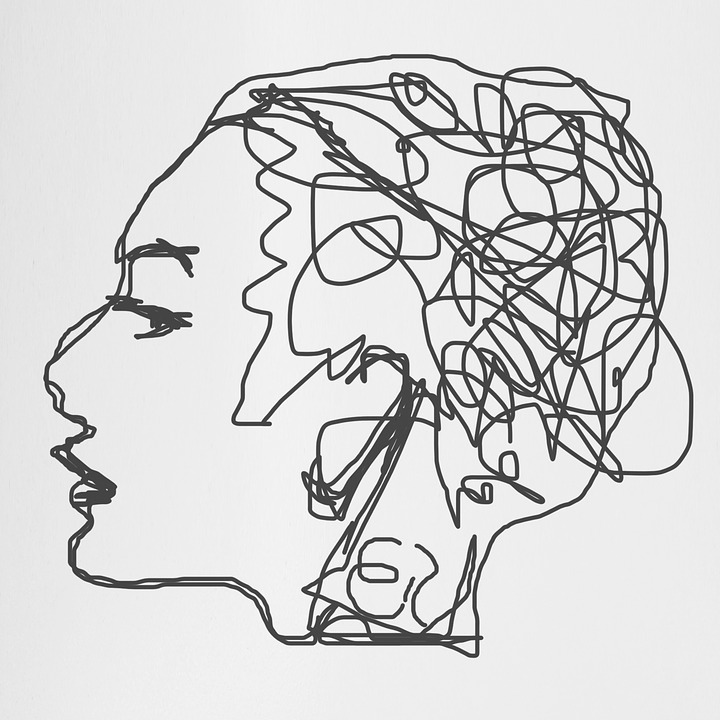

Machteld van den Heuvel

Eftychia Stamkou
Machteld van den Heuvel’s (Work and Organizational Psychology) question
Dear Eftychia,
You study ‘the processes through which art transforms individuals and societies’. I wonder if you have any insights for us how art may help us during these lonely Covid-19 times, when many art forms have sadly been canceled or restricted? I personally find joy and comfort in making music and sculpturing. So more broadly, my question would be, do you have any scientific insights about how art may support our well-being and resilience during adversity?
Machteld
Eftychia Stamkou’s (Social Psychology) answer
Dear Machteld,
Thank you for this interesting question! It is very sad that most of the activities of the arts and culture sector have been shut down. This has deprived artists of their main source of income and the rest of us of a great source of pleasure and opportunities to socialize. The arts are some of the most enduring forms of culture that existed since at least 60,000 years. Given the long history and cultural significance of art, it comes as no surprise that even during these difficult times, people still engage with the arts one way or another. What would the lockdown feel like without music, films, novels, dancing in the living room, or virtual museum tours!? Literature suggests that people have always been creating, seeking, and devouring art for good reasons. Over the past two decades, there has been a major increase in research into the beneficial effects of art on the individual, especially in terms of health and well-being: Art can uplift our mood, make us feel more relaxed, strengthen our immune system, increase cognitive flexibility, etc. So, the benefits of art for individuals during the lockdown are pretty straightforward. What is less know, however, is how art can benefit societies and improve our relations with fellow human beings. I believe that the social ramifications of art are as important as its individual-level effects, because one of the major challenges of our times is motivating people to act for the greater good (rather than own interest). I would therefore like to focus more on the potential of art to increase societal resilience, for which evidence is very scarce but promising. A central feature of art is its power to evoke strong emotional experiences. Among the many emotions evoked by art, there are two clusters of emotions that may be particularly relevant to its social effects. The first cluster are emotions of self-transcendence, such as awe, wonder, the sublime, compassion, and feeling moved. Some works of art—but not all artworks—can evoke this kind of emotions, which are known to increase tendencies towards social integration. For instance, experiences of awe lead to self-diminishment, humility, and decreased feelings of entitlement. Research shows that these states of “small self” increase helping behavior, ethical decision-making, and generosity towards others. For example, awe experiences in response to artistic expressions of nature have been found to increase people’s tendency to prioritize the common good over self-interest and to volunteer their time to help others. Thus, awe helps individuals fold into social collectives by leading to a reduced estimation of one’s individual importance and by binding individuals together through prosocial helping. The second cluster are emotions of other-understanding through empathy, which weaken the boundaries between the self and other. When people engage with an artwork, they can “feel and see into” the emotions and actions depicted in it by virtue of embodied emotions and action simulation, which allows them to vividly imagine the artwork content. The particular empathic power of art is that it enables us to “get into the shoes” of individuals who differ drastically from us, allows us access to environments and situations that are impossible to reach (e.g., from the historical past) or difficult to experience firsthand (e.g., distant cultures), and make us aware of the plights of those suffering while we cross borders. Anything that makes it easier for us to imagine trading places with others entails that we increase our moral considerations towards that other person. I believe that the beneficial impact of the arts during these times could be furthered through acknowledging and acting upon the growing evidence base.
Eftychia
Eftychia Stamkou’s question is for Brenda Jansen (Developmental Psychology)
Dear Brenda,
What does it take for children to start questioning a cultural norm that they have grown up with and came to consider ‘normal’, such as heteronormativity or gender role norms?
Eftychia

Machteld van den Heuvel’s (Work and Organizational Psychology) question
Dear Eftychia,
You study ‘the processes through which art transforms individuals and societies’. I wonder if you have any insights for us how art may help us during these lonely Covid-19 times, when many art forms have sadly been canceled or restricted? I personally find joy and comfort in making music and sculpturing. So more broadly, my question would be, do you have any scientific insights about how art may support our well-being and resilience during adversity?
Machteld

Eftychia Stamkou’s (Social Psychology) answer
Dear Machteld,
Thank you for this interesting question! It is very sad that most of the activities of the arts and culture sector have been shut down. This has deprived artists of their main source of income and the rest of us of a great source of pleasure and opportunities to socialize. The arts are some of the most enduring forms of culture that existed since at least 60,000 years. Given the long history and cultural significance of art, it comes as no surprise that even during these difficult times, people still engage with the arts one way or another. What would the lockdown feel like without music, films, novels, dancing in the living room, or virtual museum tours!? Literature suggests that people have always been creating, seeking, and devouring art for good reasons. Over the past two decades, there has been a major increase in research into the beneficial effects of art on the individual, especially in terms of health and well-being: Art can uplift our mood, make us feel more relaxed, strengthen our immune system, increase cognitive flexibility, etc. So, the benefits of art for individuals during the lockdown are pretty straightforward. What is less know, however, is how art can benefit societies and improve our relations with fellow human beings. I believe that the social ramifications of art are as important as its individual-level effects, because one of the major challenges of our times is motivating people to act for the greater good (rather than own interest). I would therefore like to focus more on the potential of art to increase societal resilience, for which evidence is very scarce but promising. A central feature of art is its power to evoke strong emotional experiences. Among the many emotions evoked by art, there are two clusters of emotions that may be particularly relevant to its social effects. The first cluster are emotions of self-transcendence, such as awe, wonder, the sublime, compassion, and feeling moved. Some works of art—but not all artworks—can evoke this kind of emotions, which are known to increase tendencies towards social integration. For instance, experiences of awe lead to self-diminishment, humility, and decreased feelings of entitlement. Research shows that these states of “small self” increase helping behavior, ethical decision-making, and generosity towards others. For example, awe experiences in response to artistic expressions of nature have been found to increase people’s tendency to prioritize the common good over self-interest and to volunteer their time to help others. Thus, awe helps individuals fold into social collectives by leading to a reduced estimation of one’s individual importance and by binding individuals together through prosocial helping. The second cluster are emotions of other-understanding through empathy, which weaken the boundaries between the self and other. When people engage with an artwork, they can “feel and see into” the emotions and actions depicted in it by virtue of embodied emotions and action simulation, which allows them to vividly imagine the artwork content. The particular empathic power of art is that it enables us to “get into the shoes” of individuals who differ drastically from us, allows us access to environments and situations that are impossible to reach (e.g., from the historical past) or difficult to experience firsthand (e.g., distant cultures), and make us aware of the plights of those suffering while we cross borders. Anything that makes it easier for us to imagine trading places with others entails that we increase our moral considerations towards that other person. I believe that the beneficial impact of the arts during these times could be furthered through acknowledging and acting upon the growing evidence base.
Eftychia
Eftychia Stamkou’s question is for Brenda Jansen (Developmental Psychology)
Dear Brenda,
What does it take for children to start questioning a cultural norm that they have grown up with and came to consider ‘normal’, such as heteronormativity or gender role norms?
Eftychia


